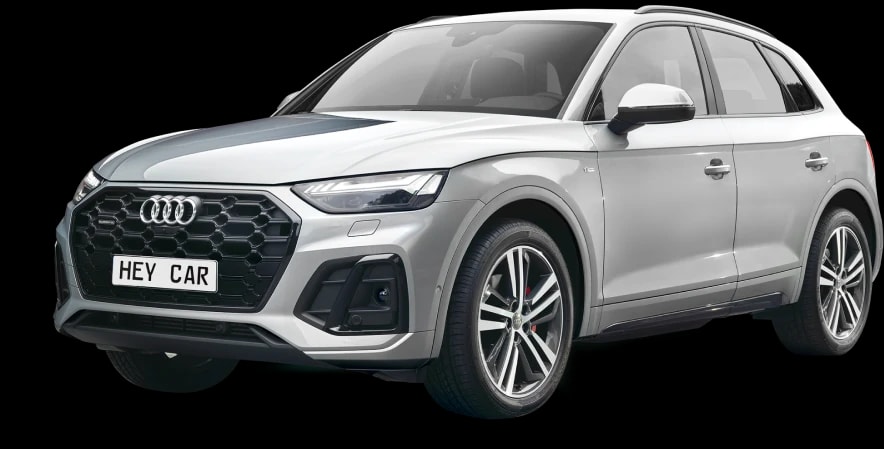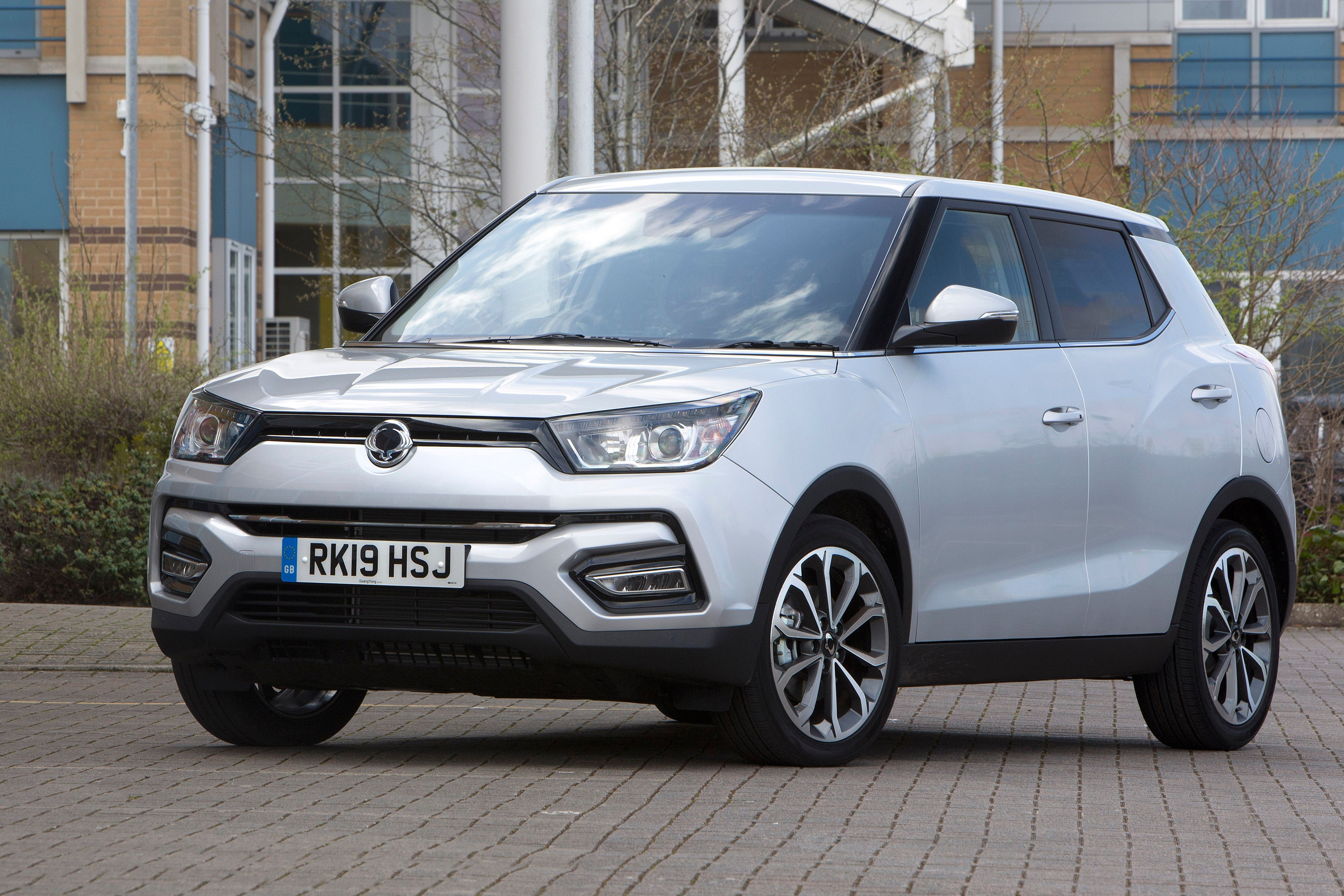KGM Tivoli (SsangYong Tivoli) Review 2025: Price, specs & boot space
Written by Andrew Brady
Quick overview
Pros
- Great value for money
- Five-year warranty
- Roomy and practical
Cons
- Noisy engine
- Styling won’t be to all tastes
- KGM brand remains unknown
Verdict: Is the KGM/SsangYong Tivoli a good car?
"Ask most people if they've heard of KGM/SsangYong and the answer is likely to go along the lines of 'who?'. The Korean brand has been in the shadow of Kia and Hyundai for many years, not helped by a below par line-up including the old Rexton and Rodius. But things are changing and the Tivoli was the first model that was noticed for all the right reasons."
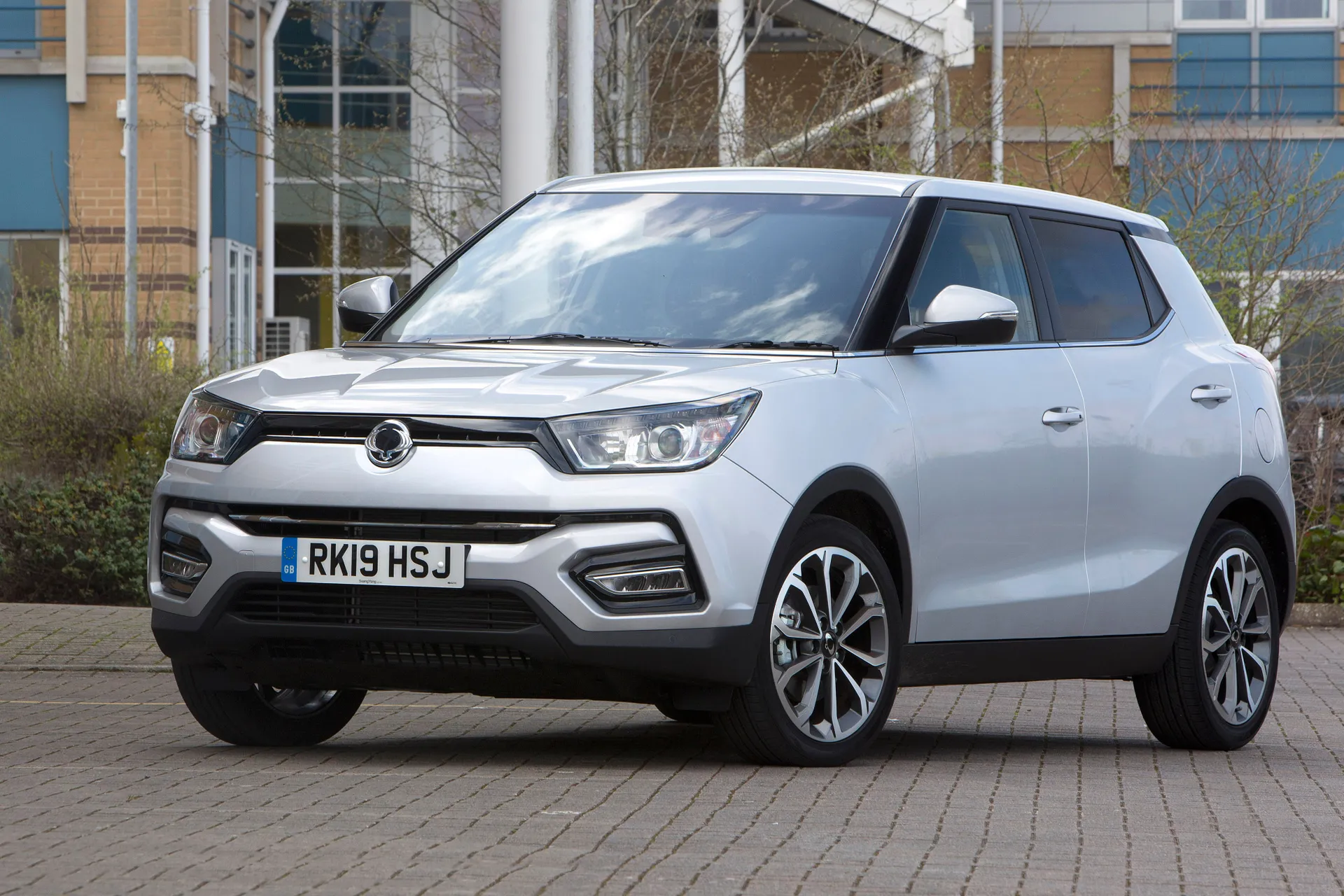
But the KGM Tivoli review reveals it's something of a well-kept secret. It may not have the cache or badge appeal of its competitors, but the price, equipment, space and warranty are definite plus-points, making this one of the best value cars you can buy. It comes tantalisingly close to being one of the industry’s undiscovered gems.
The KGM Tivoli is all about bang for your buck, and it's one of the best cheap SUVs, you’ll be pleased to know there’s an entire bonfire night display of whiz, bangs, and flashes.
Unlike the previous Tivoli, the latest car comes in just one trim called K40. This follows SsangYong's recent rebranding to KGM, where its new cars share similar trim monikers. Cars get dual-zone air conditioning, a reverse camera, electronic cruise control, sat-nav, Apple CarPlay and Android Auto as standard.
Practicality is another factor, with a decent amount of interior space compared to its rivals. For those looking for a bit more space, the KGM Tivoli offers estate car levels of luggage capacity and seats for five adults. Similarly, every KGM comes with a five-year warranty for peace of mind.
But it’s not all good news. The styling is so-so, though that’s ultimately a personal choice, and arguably it looks good from certain angles. The front looks upmarket, and the alloy wheels add a touch of class. However, there’s no disguising the awkward-looking rear, which borders on ugly from some angles. But, it looks distinctive and is sure to be noticed.
Then there’s the 1.5-litre engine - another weak point. Before, the Tivoli was also offered with a lacklustre diesel, but that's been cancelled. The new petrol engine outputs 163PS, meaning performance is perkier than the pervious 1.6, but it's front-wheel drive and can be equipped with a rubbish automatic 'box.
Of course, all of Tivoli’s strengths would be for nothing if it was crude and badly made – but it isn’t. The neat, attractively laid out cabin is almost as good as you’d find in other Korean cars and that is genuine praise these days. The centre stack is sensibly laid out and the plastics are plush and durable. It might not be an exceptional interior, but it’s as good as its rivals from Renault and Nissan of the same age.
Ultimately, the KGM Tivoli is a curiously appealing and credible small SUV. If space, price and toys are your priorities, the SsangYong Tivoli is worth a look. The price-to-equipment ratio makes a mockery of the cost of other small SUVs.
heycar has 1000s of used cars for sale, including a wide range of SsangYong Tivoli cars for sale. If you're looking for the larger version, you need our SsangYong Tivoli XLV review.
Is the KGM/SsangYong Tivoli right for you?
For many buyers, the appeal of the KGM Tivoli lies in the fact that it’s frugal, practical and safe. And then the Tivoli's five-year/100,000-mile warranty will be the deal maker.
Unlike some of its rivals, KGM's warranty pretty much covers everything from the engine and suspension, to the wheel bearings and in-car audio. Yet, for what you get given in value, the KGM takes away with poor refinement.
What’s the best KGM/SsangYong Tivoli model/engine to choose?
The KGM Tivoli is certainly well equipped and is a very affordable new buy. As you'd expect, it comes with leather seats which are heated in the front, dual-zone climate control, keyless start, front and rear parking sensors, cruise control and pretty much everything else you'd want.
The 9-inch infotainment system looks dated and has a rather confusing menu layout. Luckily, there are a few physical buttons, there's also Android Auto and Apple Car Play.
What other cars are similar to the KGM/SsangYong Tivoli?
There’s a few options to weigh up against the KGM Tivoli. There's the Dacia Sandero Stepway, the Suzuki Vitara, and even the discontinued Skoda Roomster for slightly obscure practicality - though the Roomster is getting a little long in the tooth now...
KGM has pitched the Tivoli somewhere between a Nissan Juke and Nissan Qashqai. As a result, it’s roomier and more practical than a Juke but falls short of being an all-rounder like the Qashqai.
Other Modern alternatives include the Skoda Kamiq, MG ZS, Renault Captur, Ford Puma and Toyota Yaris Cross.
Comfort and design: KGM/SsangYong Tivoli interior
"SsangYong interiors have come in leaps and bounds in the past few years and are now closer than ever to rivals from Europe and other Korean manufacturers like Hyundai and Kia.The Tivoli interior isn’t going to win any awards for imagination, but it’s not the ‘bargain basement’ affair you might expect."
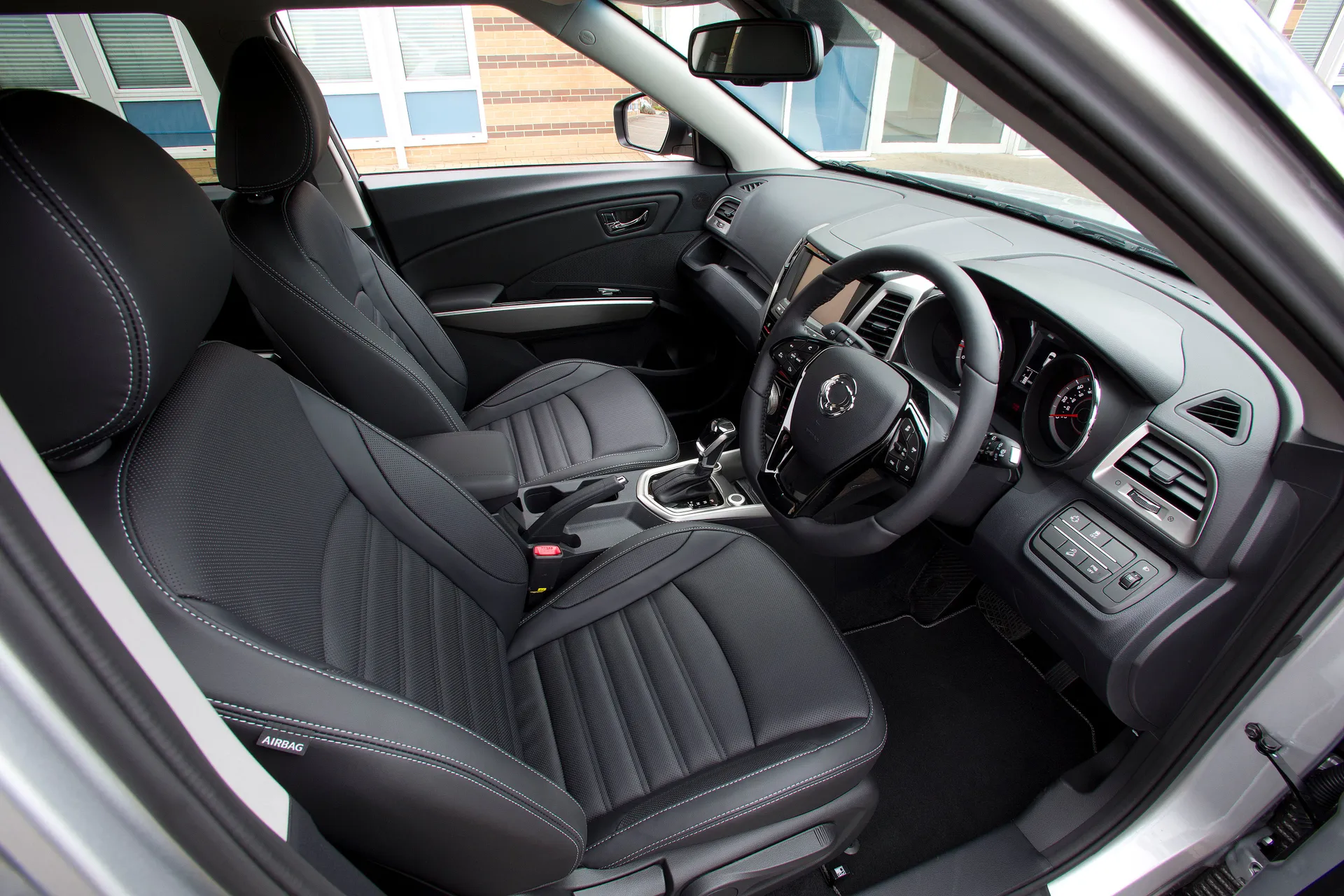
While the centre console may look like a cheap hi-fi system from the '90s, complete with oddly thin buttons, it’s a pretty simple system to use. There’s also an odd mismatch of grey plastics that won’t be to everyone’s taste, but it’s easy enough to live with.
It’s easy to find a decent driving position, with the steering wheel adjustable for height and reach, and the driver’s seat adjustable for height. There’s no lumbar adjustment, and the seats lack lateral support, so you tend to move about when cornering.
The driving position could be improved. The pedals are a little offset, which might cause some discomfort on a long journey, while you tend to sit ‘on’ the seats. This might seem like a strange thing to say in a car with a high driving position, it’s just that there’s an overriding sense of being perched when you’re driving the KGM Tivoli.
Quality and finish
Like other recent KGM products, quality is questionable in places. The Tivoli features squishy materials, making it feel slightly posher than a Dacia Duster. Lots of dark scratchy plastics fill the cabin and none of the switches or panels feel tough. Yet another point to its rivals.
Infotainment: Touchscreen, USB, sat-nav and stereo in the KGM/SsangYong Tivoli
This is where the KGM fends off much of its competition. It boasts a nine-inch colour touchscreen infotainment system with DAB digital radio, iPod and Bluetooth connectivity, and TomTom satellite navigation. Apple CarPlay and Android Auto are also fitted as standard.
The system is a comprehensive setup that also includes steering-wheel-mounted controls, six speakers, including two tweeters, and a rear-view camera.
On the road, it’s simple to use, but while the display is clear, it lacks the clarity of rival systems. Switching to Apple CarPlay or Android Auto certainly helps, as the screen looks nicer, and the system is faster.
We also like how KGM has positioned key functions on buttons below the screen, while the steering wheel controls ensure everything's easy to use without taking your eyes off the road ahead.
Space and practicality: KGM/SsangYong Tivoli boot space
Starting with the boot - one of the key aspects of this car - it has a reasonable capacity of 427 litres, expandable to 1118 litres by folding the rear seats forward. However, the load area does have quite a high load lip, which might pose problems for those who carry bulky loads or dogs. It also does without a load cover in basic SE trim, though you could purchase one as an accessory.
The rear seats fold 60:40 to open up more space if the back seats aren’t required. Entry to the boot is hampered by a high-loading lip while the wheel arches eat into available space.
With external dimensions of 4225mm in length, 1810mm in width and 1620mm in height, the back seats provide enough room for three adults, with plenty of headroom and legroom available. Even the middle-seat passenger will feel comfortable, with plenty of room for their feet. If the middle seat isn’t required, the centre armrest can be lowered to reveal a pair of cupholders. The storage straps on the backs of the front seats are a bit odd, but you might find a use for them.
Handling and ride quality: What is the KGM/SsangYong Tivoli like to drive?
"On its 18-inch wheels, the Tivoli's ride is firm. It's not especially forgiving over rough roads and while vibrations are well insulated from the cabin there's a fair amount of tyre noise."
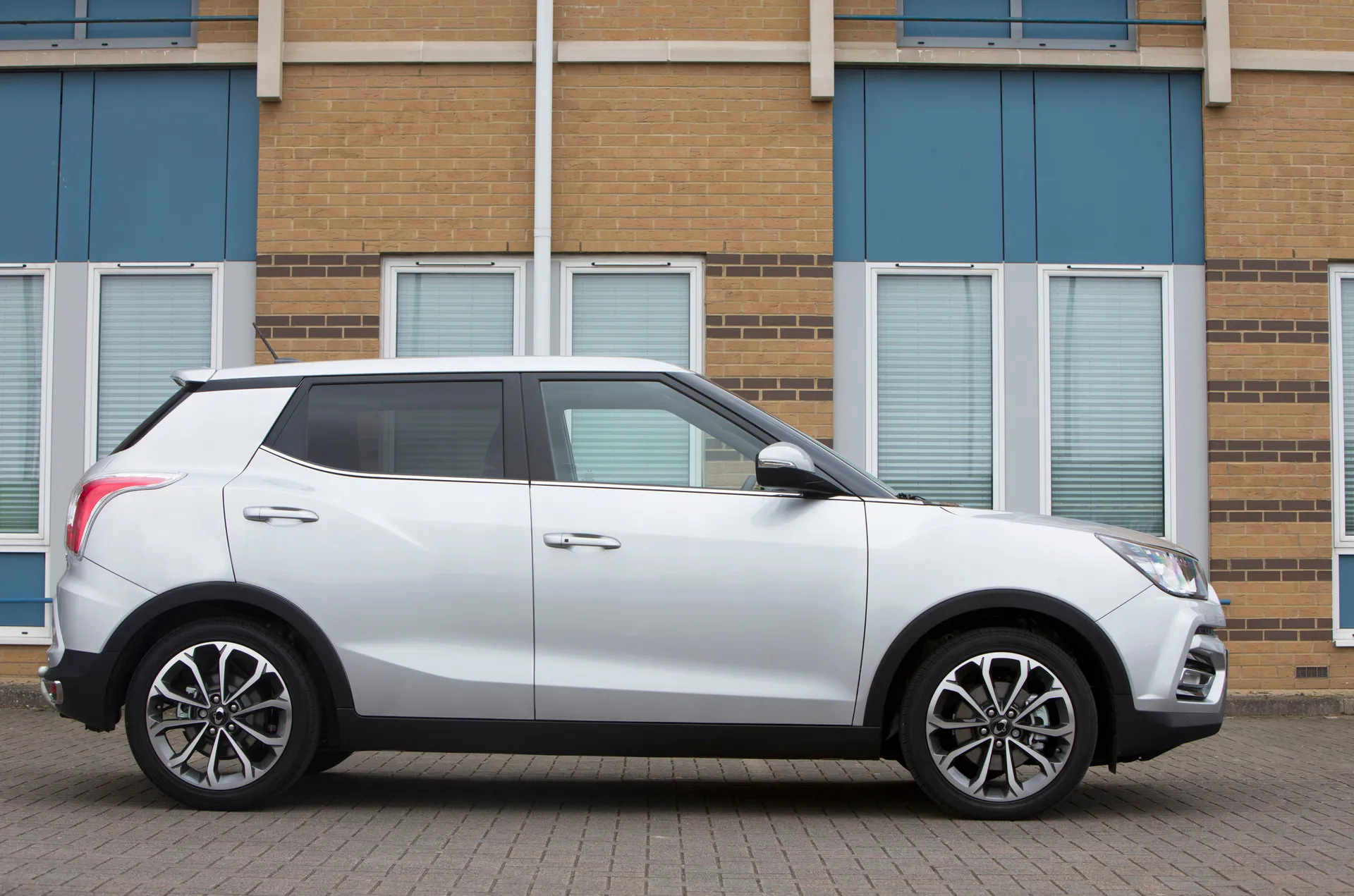
It's not harsh, which suits Tivoli's image as a KGM with a more youthful appeal. The upside of this is that it handles well.
Out on the road, there’s a fair bit of body lean, so if you enter a corner with too much enthusiasm, the Tivoli will roll around and the tyres can feel as though they’re on the edge of adhesion.
But, that’s not why you would buy a Tivoli, is it? Keep the Tivoli within its limits and it’s a thoroughly pleasant and decent car to drive. It’s especially nice around town, where the high driving position, light steering and all-round excellent visibility combine to make it very easygoing.
What engines and gearboxes are available in the KGM/SsangYong Tivoli?
Before, buyers could choose between a 1.6-litre petrol and a 1.6-litre diesel engine, though for the first few months, the SsangYong Tivoli (before the KGM rebrand) was sold as petrol only. Both engines were linked to either a six-speed manual or six-speed automatic transmission, plus the option of all-wheel drive.
KGM has since resorted to petrol only yet again, but there's no four-wheel drive option.
Refinement and noise levels
The 1.5-litre is reasonably hushed at low revs but booms beyond 3000rpm. Likewise, you'll regret taking it near 4000rpm.
There's also notable suspension, road and wind noise. Again, a point given to most of its rivals.
Safety equipment: How safe is the KGM/SsangYong Tivoli?
One safety benchmark that allows us to compare cars like for like is the Euro NCAP crash tests, where points and stars are awarded to highlight how a car performs in a crash. The SsangYong Tivoli was tested and achieved three stars out of five when launched.
But with safety being a key factor in purchasing decisions for many buyers, a three-star Tivoli would be a harder sell than rivals that have achieved four or five stars. The latest KGM guise hasn't been tested.
Luckily, the KGM Tivoli has autonomous braking, lane-keep assist, and lane departure warning. Likewise, the car is built on a high-strength monocoque frame and features seven airbags.
MPG and fuel costs: What does a KGM/SsangYong Tivoli cost to run?
"Good MPG isn’t one of the KGM Tivoli’s strong suits"
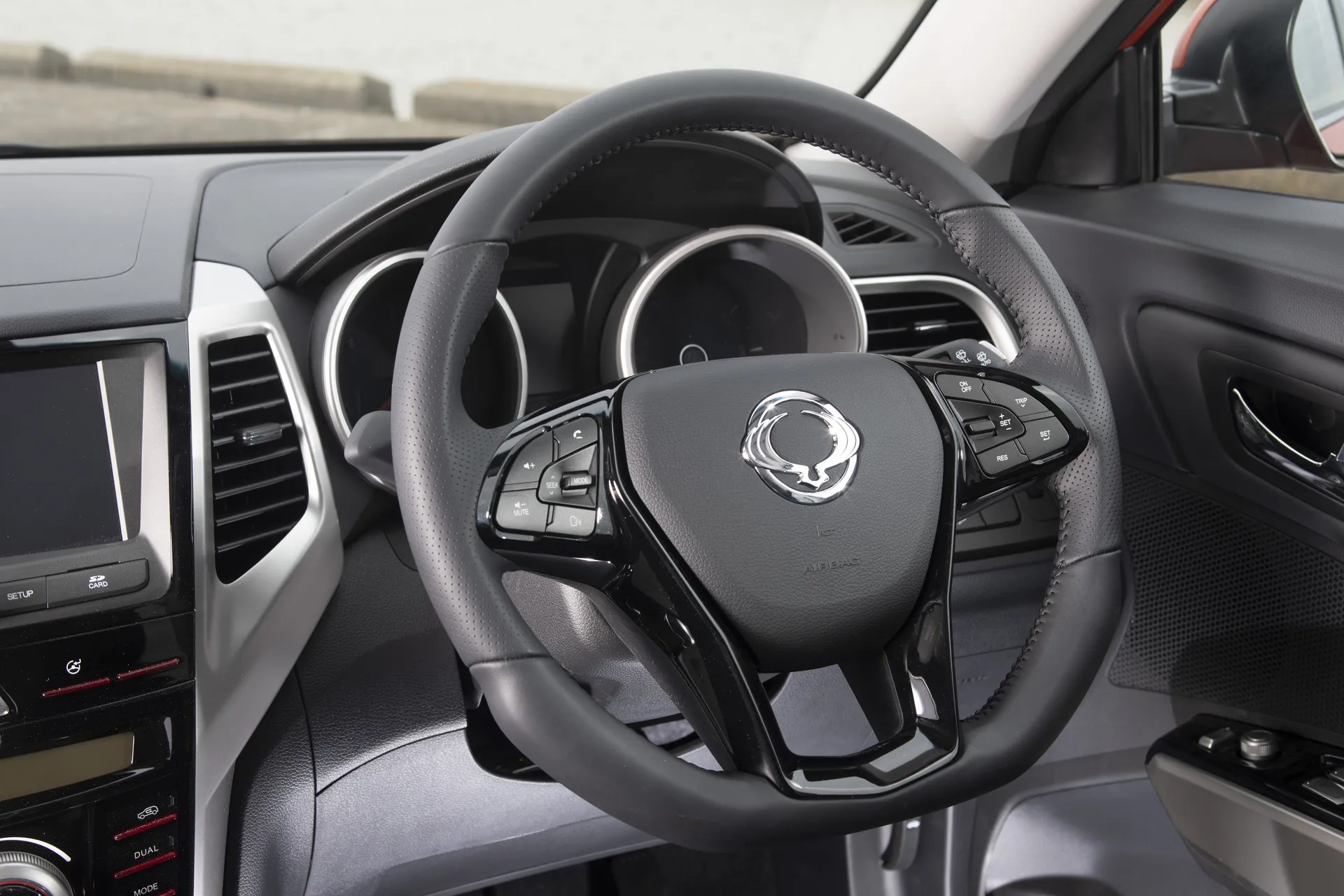
Again, like the previous SsangYong Tivoli, the KGM guise suffers from poor MPG despite the new engine. The 1.5 delivers an official 39.6mpg and equipping the auto drops this to 36.4mpg. In comparison, the new Dacia Sandero Stepway delivers between 45.6 and 50mpg.
KGM/SsangYong reliability and warranty
KGM didn't make the 33-manufacturer list in the latest Honest John satisfaction index. On another note, it didn't make any 'worse cars' lists either.
Despite the rubbish auto gearbox, the Tivoli seems fairly reliable. It's difficult to say how much this will dwindle in years to come as quality isn't KGM's strong suit.
KGM/SsangYong insurance groups and costs
Before, the SsangYong Tivoli straddled insurance groups 13 to 16, but the latest K40 sits in group 18 regardless of transmission.
VED car tax: What is the annual road tax on a KGM/SsangYong Tivoli?
Lacklustre performance equates to poor c02 emissions. Opt for the manual gearbox, and you'll pay £680 showroom tax followed by the standard rate of £195 per year afterwards. If you've lapsed in concentration and bought the auto, the showroom tax rises to £1,095.
KGM/SsangYong Tivoli price
"Earlier SsangYong-branded cars are priced from £3,000 while XLV cars cost circa £4,000. Getting behind the wheel of a later KGM costs significantly more."
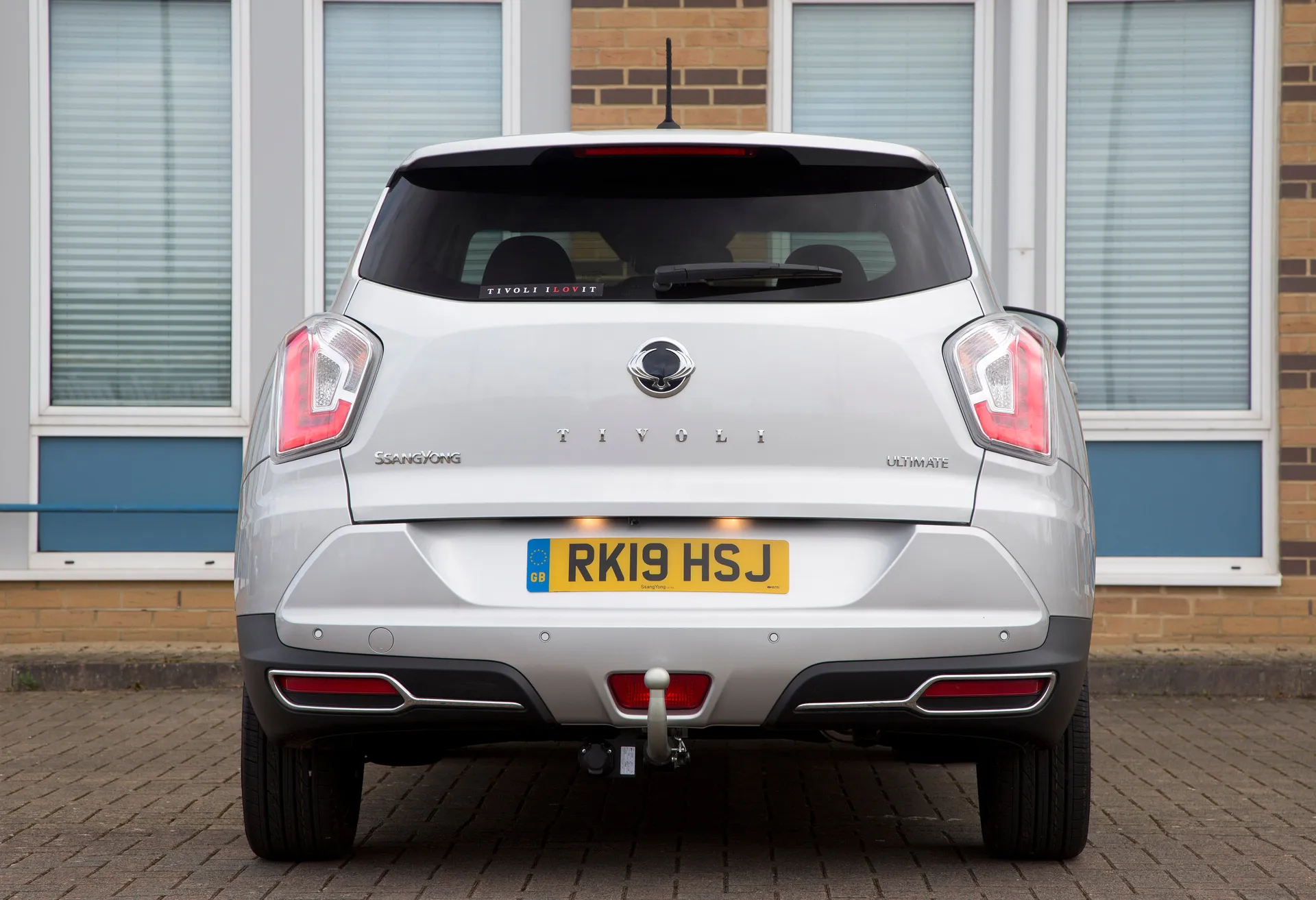
2021 diesel cars with circa 20,000 miles fetch £11,000, but this gets you an outdated-looking car with a poor diesel engine while 2024 petrol cars with under 2,000 miles demand circa £14,000.
Buying new won't break the bank as the entry-level Tivoli costs £23,030 and you'll pay £1,520 for the automatic. Online deals reveal savings up to £1,040 for the manual and £1,580 for the auto.
Trim levels and standard equipment
Unlike the old Tivoli with three trim levels, only one exists for the KGM. Still, you get heaps to boot such as automatic headlamps, parking sensors, cruise control, rain-sensing wipers, reversing camera, keyless start and entry, heated front seats and lots of safety stuff.
There are a few optional extras such as a wind deflector kit, caravan wiring, tow bar, dog guards, boot liners, mud guards and floor mats, and a touch-in paint pen.
Ask the heycar experts: common questions
Are KGM/SsangYong Tivolis reliable?
How many engines are there with the KGM/SsangYong Tivoli?
Is the KGM/SsangYong Tivoli a 4x4?
Get our latest advice, news and offers
Keep me updated by email with the latest advice, news and offers from heycar.
By submitting you agree to our privacy policy